
In this lesson, students practice writing descriptive essays.
- Subject:
- English Language Arts
- Material Type:
- Lesson Plan
- Provider:
- Beacon Learning Center
- Author:
- Beacon Learning Center
- Date Added:
- 04/23/2019

In this lesson, students practice writing descriptive essays.
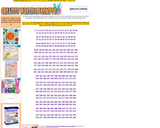
This resource contains a large number of creative writing prompts to encourage the flow of ideas.
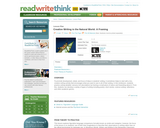
To promote development, detail, and focus of ideas in students’ writing, it sometimes helps to start with a fun, creative writing activity that encourages what you want to see in all of their writing. In this minilesson, students practice writing detailed, sensory-rich descriptions by framing a small piece of nature and freewriting about it. From this, students can develop a variety of types of writing including poetry, short stories, science writing, reflections, and other academic genres.

The media has a huge effect on popular culture. Television programs underscore stereotypes of various groups of people.This lesson provides a platform in which students can critically analyze popular television programs. By looking at the media critically, students develop an awareness of the messages that are portrayed through the media.
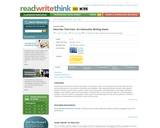
In this lesson, students try their hand at creative descriptions of characters, learn new vocabulary words that allow for more precise descriptions, and practice using simile and metaphor. After analyzing sample character descriptions, students choose a picture (from a print or online source) and write a vivid description of its subject. Students engage in peer editing, rewrite their descriptions, and post them on the classroom walls for a matching game. Students read one another’s paragraphs, make note of favorite descriptive words and comparisons, and find a matching set (description and picture) to share with the class.
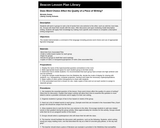
In this lesson students will work in groups to rank a list of words from one extreme to the other, such as cold-hot, love-hate, etc. Groups will share their results with the class. After discussion and upon reviewing model descriptive writing, students will apply their knowledge by making more specific word choices to complete a descriptive writing assignment.
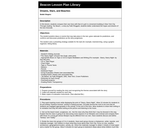
Students will read the story, Tar Beach by Faith Ringgold and compare thier own lives with that of a girl in a tenement builidng in New York City. Through reading the story, students will better understand the hopes and dreams of the less fortunate.
Student will predict ideas or events that may take place in the text, give rationale for predictions, confirm and discuss predictions as the story progresses.

As a way to support teachers with English Language Arts (ELA) instruction during the pandemic, the NCDPI ELA team created choice boards featuring standards-aligned ELA activities.The intended purpose of these choice boards is to provide a way for students to continue standards-based learning while schools are closed. Each activity can be adapted and modified to be completed with or without the use of digital tools. Many activities can also be repeated with different texts. These standards-based activities are meant to be a low-stress approach to reinforcing and enriching the skills learned during the 2019-2020 school year. The choice boards are to be used flexibly by teachers, parents, and students in order to meet the unique needs of each learner.Exploration activities are provided for a more self-directed or guided approach to independent learning for students. These activities and sites should be used as a way to explore concepts, topics, skills, and social and emotional competencies that interest the learner.

This lesson guides students through the five-paragraph essay format.

This lesson guides students through the five-paragraph essay format.

This lesson guides students through the five-paragraph essay format.
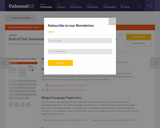
In this lesson, students analyze a model narrative, "The Golden Key", and will complete a final draft of their narratives for the end of unit assessment.

In this lesson, students will select their theme of adversity and the event or experience that illuminates their challenge.
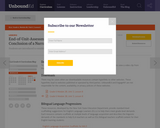
In this lesson, students will learn how to establish a context for their narrative, focusing on how authors create a settings. Additionally, students will view a video clip from Pride of the Yankees.
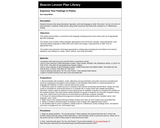
In this lesson, students gain familiarity with descriptive, figurative, and vivid language by writing free verse poetry.

This resource discusses the methodology of a five-paragraph essay.

The North Carolina Museum of Natural Science created this resource as part of an online workshop series, but you are welcome to use or modify it for your classroom. It includes a video and written directions for creating nature journals and tips for incorporating them into your classroom. For information on taking any the Nature Neighborhood online workshops for CEUs or EE credit, visit: https://naturalsciences.org/learn/educators/online-workshops.
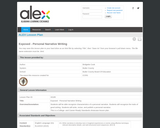
Students will be able to recognize characteristics of a personal narrative Students will recognize the traits of good writing and will write, revise, and publish a personal narrative.
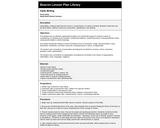
In this lesson students will use fables to determine the moral or central theme of a piece of writing. Students then create their own personal fables editing for grammar, punctuation, capitalization, and spelling.

Students will develop awareness of the fable literary form by discussing the terms anthropomorphic and personification, and will understand that authors write fables to point out or criticize problems and to impart moral lessons. Students will discuss and understand what a moral is. Students will write a fable with a beginning, middle and end, and with a moral in hopes of redefining traditional fables for our modern world.